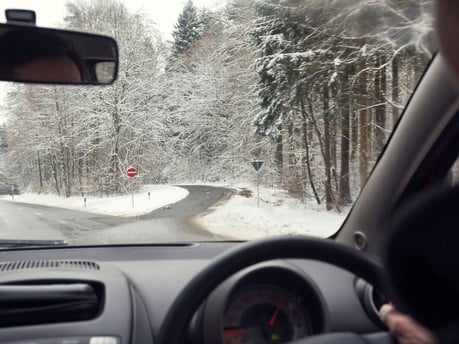How to Drive Safely in Snow and Ice
Read our guide to safe winter motoring
The UK has been having its fair share of cold snaps this winter and while a layer of snow can prove picture perfect, it can also be treacherous when travelling on the roads.
With temperatures hitting sub-zero during the morning commute to work and the daily school run, it’s vital that you know how to drive safely in snow and ice. In this handy guide we let you know how to prepare your car for winter, advise what measures you should take before you set off on a journey, and our top driving in winter tips…
Prepare your car for winter
There are a number of things you can do to make sure your car is ready and prepared for the bad weather winter brings. Help avoid a breakdown by following these six simple vehicle preparation steps:
- TYRES. During the winter months, your vehicle’s tyres are more prone to losing pressure so it’s really important you keep an eye on these. Sub-zero temperatures create an increased skid risk on the roads, so ensure your tyres still meet the minimum 1.6mm tread depth for better grip.
- BRAKES. If your brakes don’t feel quite as sharp as they used to, then get them seen to. Many local garages will offer a free brake test which will provide you with extra peace of mind.
- BATTERY. A battery is quite literally the life source of your vehicle, so you’ll want to make sure it’s in tip top condition. Battery failure is the number one cause of winter breakdowns, so make sure you don’t become a statistic!
- LIGHTS. The last thing you want in winter is your lights to be on the blink, so now’s the time to change that faulty bulb. Remember that a failed light could lead to you getting a caution from the police.
- ENGINE OIL. When was the last time you checked your engine oil? If you don’t get your vehicle serviced regularly, then you’ll need to make sure the oil is frequently topped up.
- COOLANT. Make sure your engine doesn’t become the victim of plummeting temperatures during those extra cold nights. Ensure the coolant is regularly topped up so your engine isn’t at risk of freezing.
Before you set off on your journey
Snowy and icy road conditions can make driving a real challenge and put you at a higher risk of an accident. With this in mind, it’s really important to prepare yourself and your vehicle before starting your journey in sub-zero temperatures.
Here’s what you should do before setting off in your vehicle during wintery days:
- Plan your journey – it’s a good idea to check online the route you’re going to take for any traffic updates and potential road closures.
- Allow more time – it's quite normal for your journey to take longer in bad weather so make sure you leave earlier than you usually would.
- Clear the snow from your car - make sure that your vehicle is completely clear of snow. Driving with snow still on your car could actually land you in trouble with the police, so don’t forget to remove it from your roof and bonnet.
- Check your wipers, tyres and screenwash - ensure your wipers work and that you have enough screenwash (with antifreeze included!). Check your tyres are the correct pressure and you have an adequate amount of tread.
- Pack essential items - always be prepared by travelling with the following items during your journey should you get stuck in traffic or break down: a torch, hi-vis vest, a blanket, snacks, water, de-icer, ice scraper, phone charger, first aid kit, warning triangle and jump leads.
Driving in snow and ice
Even when the weather is snowy and icy, sometimes it may be necessary for you to still travel. Unless it is deemed dangerous to do so, always head out in the car with caution during spells of wintery weather.
Here’s how you should drive when faced with ice and snow on the roads:
- Slow your speed to at least 10% less than the designated speed limit, if the conditions allow. In extreme weather conditions, it may be that you deem it necessary to go even slower.
- Take it slow when approaching corners - even if the road conditions don’t look too bad, you never know what’s around the corner!
- Always accelerate gently, use low revs and change up to a higher gear as soon as possible.
- Try to pull away in second gear as this will help reduce the wheels from slipping.
- Maintain a safe stopping distance between you and the car in front, leaving as much as 10 times the normal recommended gap.
- If your car does skid, try not to panic. The best thing to do in this situation is gently steer into it - do not take your hands off the steering wheel or stamp your foot on the brake.
- If you don’t have automatic lights, make sure you switch them on in dull weather - even during the daytime.
- Try and stick to main roads where possible as these are more likely to be gritted rather than countryside B roads.
Winter vehicle hire
Come rain or shine, sleet or sun, we’re here for all your vehicle hire needs. At Rent Direct, you can hire a car, MPV or van on a short or long term basis whether for personal or work use.
You’ll find us at six locations across East Anglia where you can take advantage of special offers on a range of rental vehicles in our fleet. Start your car, MPV or van search online and book a pick-up at your convenience from one of our branches.
We hope to see you soon!

